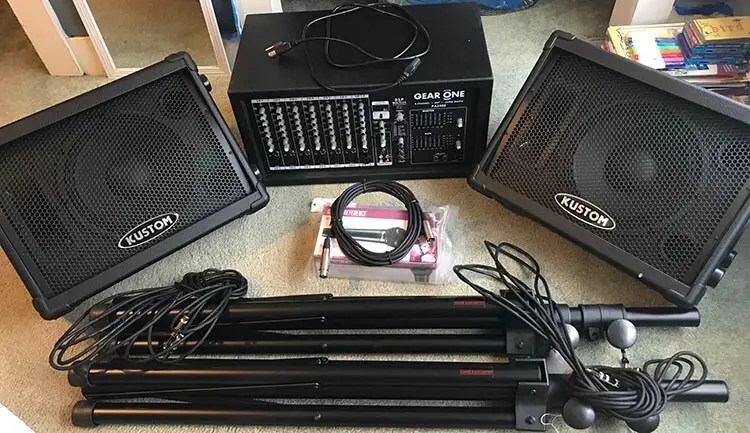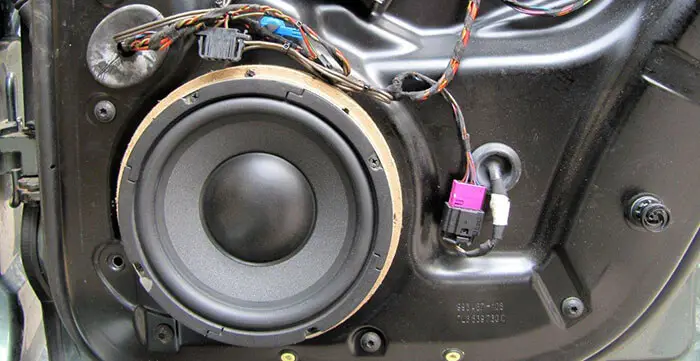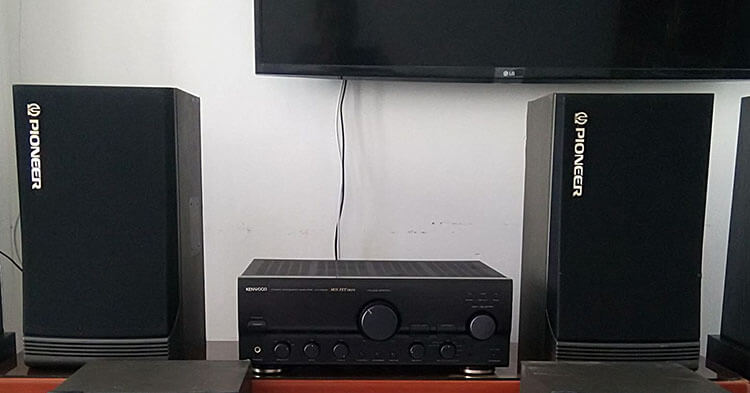The answer to this question could be yes or no, depending on your overall audio system capabilities and a few factors. Those factors include amp channel, minimum and nominal impedance ratings, wire connection level, Splicing, and terminal count.
I will go through all the factors in detail to help you understand what you should and shouldn’t do. Besides, I will also share some tips along the way.
Speaker Wire Connecting Methods

There are different types of connection methods for speaker wires depending on your amplifier and speaker. Your amplifier could have one kind of connection method, but on the other hand, the speaker could have a single or multiple.
One of that methods uses spring clips, whereas the other is binding posts.
You will find the spring clips in older and cheaper versions of the speakers and amplifier, whereas the binding is used in all amplifiers and speakers. These methods require different ways to use.
Spring Clips:
As for the spring clips method, you can finish it in two steps.
- Take the bottom or lower part of the clip and press it down.
- Then, take the speaker wire and put it inside the slot.
You can also use pin connectors with this method.
Binding Posts:
In this type of method, there are two ways to do it. One is directly, and another one is using a banana plug.
Way #1: You will find a black or red cap above the posts. Remove them. Then, simply input the wire inside it, and put the cap back on.
Way #2: Take the wire and join it at the endpoint of the post. Then, use a banana plug to connect the post and the cables.
As you can see, these are basic connecting methods, and all require a single hole for a single wire. But, sometimes, you might want to put two speaker wires in one slot.
What Should You Consider? Can You Put 2 Speaker Wires?

You can put 2 speaker wires in one slot, but you must consider some factors first. Besides, you need to know precisely how to perform the process and whether any extra tools are required. But, using one slot for two speakers wire is always a risk.
When connecting two speakers from a single amplifier, the impedance level gets half by the amount because the resistance is at a similar or parallel level or way now.
As a result, when you connect two speakers, the ohm is now half, and the other side of the balance, which is the amount of power the amplifier will provide, will be double or up.
If the power rates in the amplifier and speaker don’t match, something will get blown, such as a fuse. That’s why the impedance, overall power, and nominal rating are essential before you connect two speakers in a single slot.
So, I made a list for you. Here are some things you must inspect;
- Your receiver’s or speaker’s impedance level or rating.
- Amplifier’s impedance rating.
- The connection way/placement.
- Channel.
I will detail the fundamental factors when you want to do this.
Impedance(Speaker and Amp): I will give you an example to explain this. If your receiver’s impedance rating is 8 ohms, it can handle this amount. That’s for a single use or channel.
On the other hand, when you add another one, the system perceives this as a parallel. And the ratings get divided by half. So, when you use two ways, each channel gets 4 ohms. But, if the receiver’s compatibility is rated for 8 ohms, then your receiver could get fried.
But here is a trick! You can keep the same impedance level by using a speaker selector switch. It will help you to control your speakers if you have an overpowered amp. That way, you won’t have to splice the wires. It’s an alternative solution.
Another solution is to get a central channel speaker. It will save you all the trouble you must go through in the process.
Placement: The issue that arises here while you add another wire in the system is that it converts into a lateral station. On the other hand, when it is vertical, that’s no issue. If your speakers are vertically oriented, that’s an advantage.
Channel: As more channels are added, the power will flow. In this case, the wires are connected parallelly. But, if the receiver’s capability is not at the level, something in the system will take the hit, such as a fuse or something.
But, in brief, using a single receiver for multiple uses is always a bad idea. It’s not an ideal solution. But, sometimes, you might want more sound or put more speakers in your audio system if there is any economic issue.
Here are some tips for going ahead with all factors considered.
Tips for Putting 2 Speaker Wires in One Slot

Now you know what you should keep in mind before connecting those speakers. But besides those factors, here are some tips while putting the wires.
But first, check whether you have these tools to perform the process of splicing wires;
- Wire stripper or Wire Cutter.
- Wire Cap.
- Wire crimper.
- Soldering Iron.
These will make the process easier and more efficient.
Maintaining a few rules will help you avoid facing any further problems. Here they are;
- You know that there are two points at the speaker’s end, a plus (+) and a minus (-). Before inserting the wires into the slot, you should jam those ends. It’s a must-do while performing this.
- You need to splice those two speaker wires at the bottom.
- Remember not to connect the right terminal to the left speaker and the right speaker to the left.
- And don’t connect the speaker’s negative to the amplifier’s positive.
After that, daisy chain the connection of the speakers in this sequence;
One speaker > The other speaker terminal > Terminal > One speaker’s terminal joins with the other.
Conclusion
That’s everything you need to determine whether you can put two wires in one slot. I hope that solves your confusion, and now you know if you want to put multiple cables in a single channel. Besides these, you know the alternatives of the process and the things to keep in mind. I will see you in another post.
Until then, good luck!
